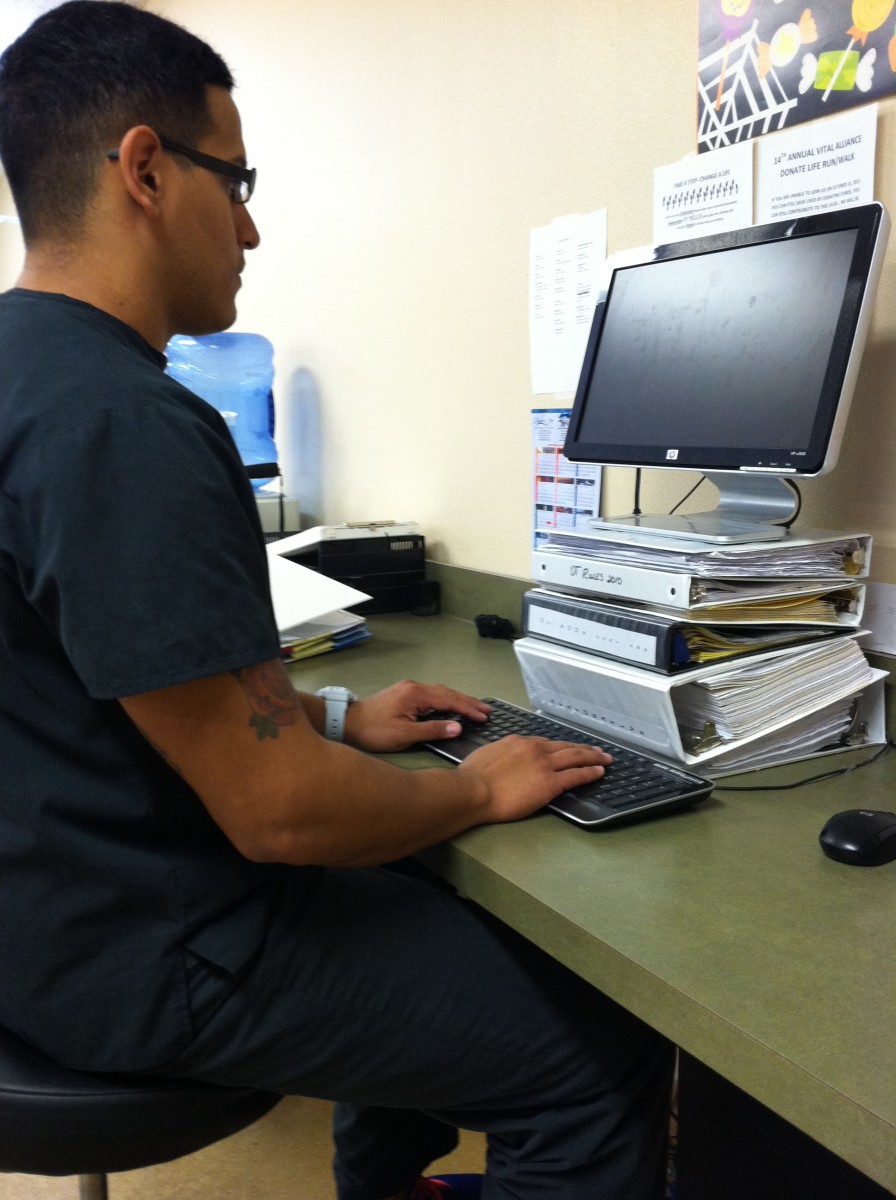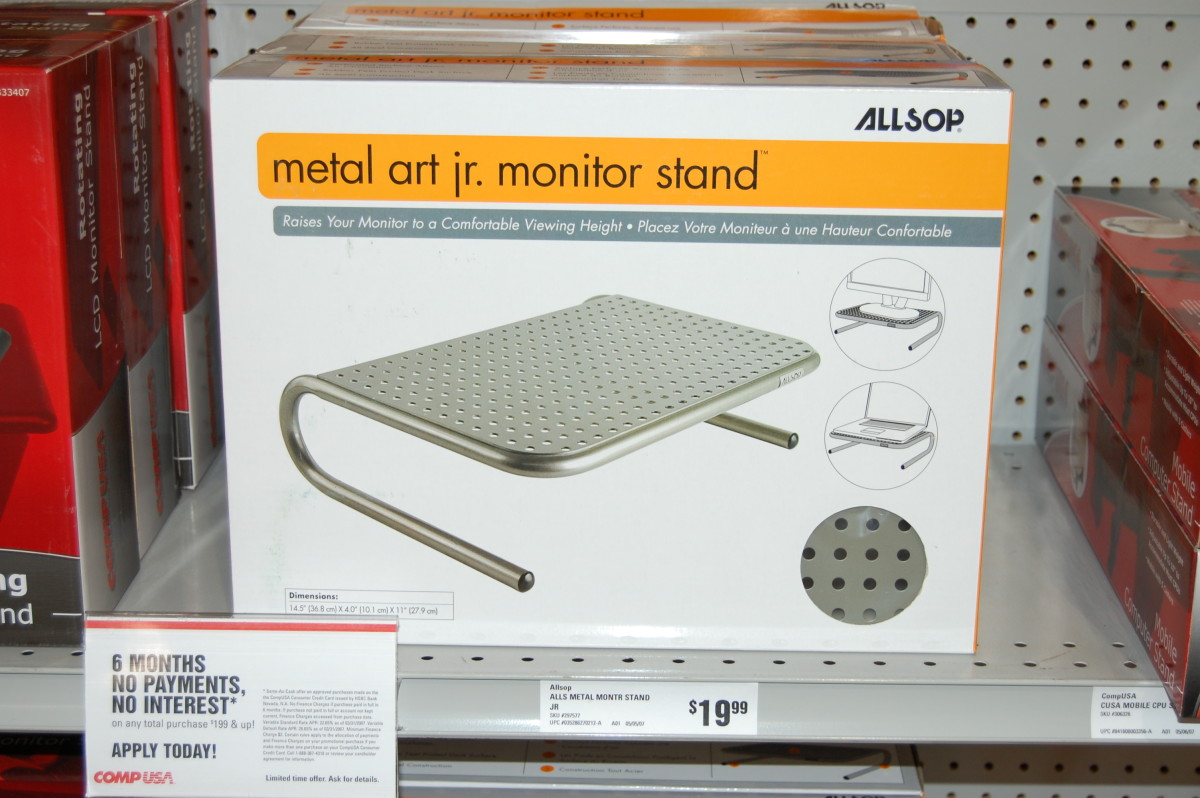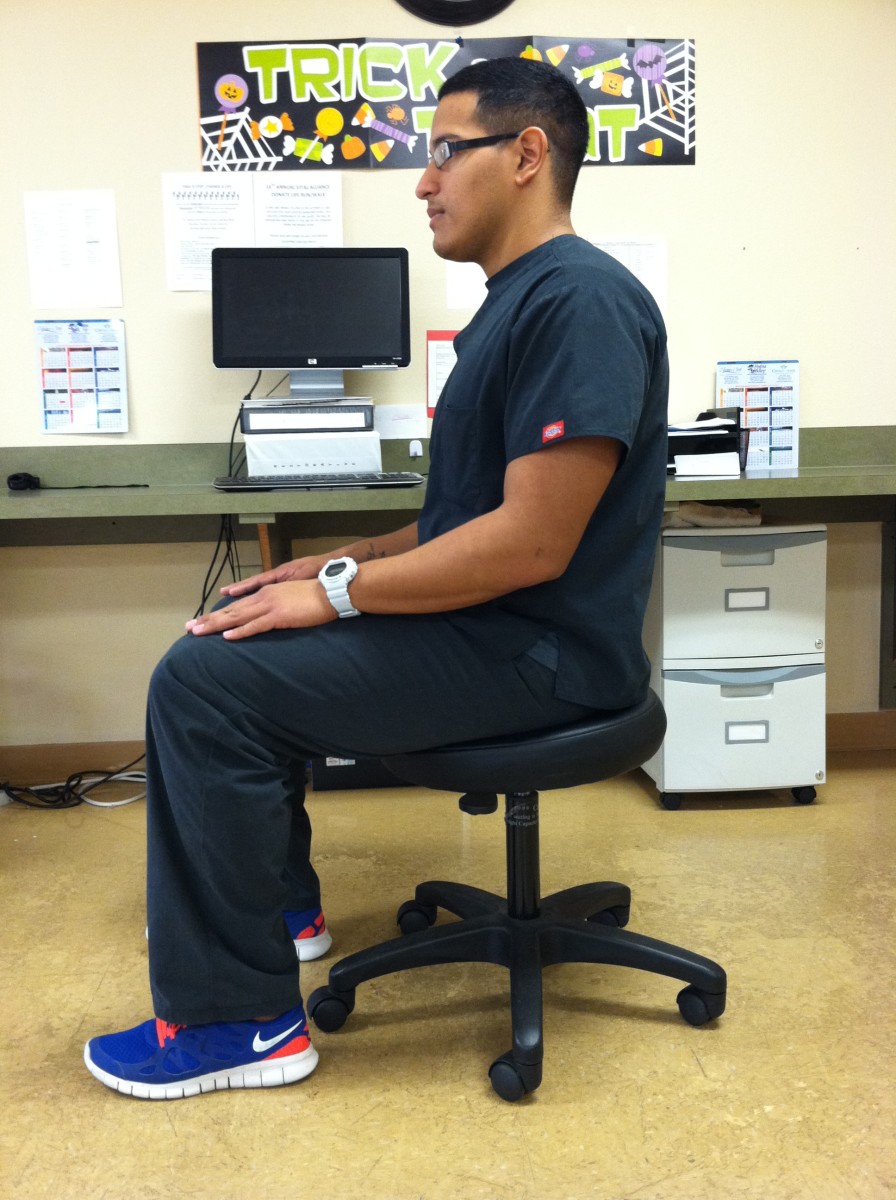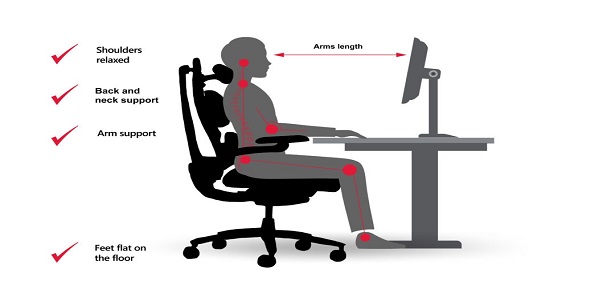How to Improve Your Computer Ergonomics
I taught a two-hour computer ergonomics class for my clients 1-2 times a month. Because most clients want relief as soon as possible, I developed a list of quick tips to get clients on the way to pain-free desk work. I have expanded these strategies from the original bare-bones bullet format, but they are still just general suggestions. The complete rationale and benefits behind the strategies will take multiple articles! These strategies are highly effective in relieving an array of hand, arm, neck, and back pains.
These strategies are also highly effective in treating and relieving presumptive carpal tunnel syndrome. (Yes, I am suggesting it’s not CTS, and “nerve” tests don’t impress me much. But another day another article.) I have a keen knack for pain related to desk work, having spent long hours at a desk myself. There are few symptoms that clients have described to me that I have not experienced myself.
In this article, you’ll find tips on how to improve your computer workstation ergonomics grouped by body regions:
- Head Position and Monitor Height
- Arm Position and Upper Chest Posture
- Chair Height and Leg Position.
Strategies for stretches and taking breaks, and perhaps surprisingly, sleep positions are also discussed.
1. Head Position and Monitor Height
Monitor Height: When working at a computer, your gaze should be hitting the top 1/3 of the monitor screen, with your head straight and level.
Head Position: Minimize time spent looking down, such as reading or writing on a desk surface or using a laptop. This is a HUGE issue—the root of pain and other symptoms for so many clients. Take frequent 30-second breaks to bring your head back to a neutral position (think balancing a book on your head).
Glasses: If you wear bifocals and want to see something more closely on the computer monitor, don’t tip your head back to look through the reading portion of the glasses. Remember that you want your head neutral. Ask your eye care provider for “computer glasses” or get full-frame reading glasses.

Computer Peripherals to Improve Ergonomics

2. Upper Chest and Arm Position
Improve Your Posture: Pull your shoulders back. Try to line up your shoulders with your ear holes. Try to remember to do this in more and more of your daily activities. Ergonomic posture is not new; your mama told you this, right?
Arm Position: When at a computer, elbows should be down by your sides, not forward of your shoulders. Elbows should be slightly opened up from 90 degrees, with wrists lower than the elbows. Minimize the time your elbows spend at 90 degrees or less, for instance, when propping your head on your hand. Elbow flexion takes the slack out of the ulnar nerve, stressing and irritating the nerve.
Mouse: Move your mouse with shoulder movement, not wrist movement. This is a key strategy in avoiding “tennis elbow” (or mouser’s elbow?).

3. Chair Height and Leg Position
Chair: If you sit for prolonged periods of time, it is especially important to optimize your chair position to improve your posture. Adjust the height of your chair, or put books under your feet so that your thigh is parallel to the floor. This minimizes strain on the spine. A desk chair does not need to be expensive, it just needs to be adjustable.
Legs: Your leg position should be 90/90/90, meaning 90 degree angles of your ankles, knees and hips. Your knees should be even with your hips.
Take Frequent Breaks and Stretch Often
Breaks: Take frequent 30 to 60 second micro-breaks throughout the day to move your body. This alone has made a significant impact for clients. Get up out of your chair and walk a few steps. You can still be “on the job” in your head! Next break, move your hands. Later your arms. Then your ankles. Get the picture?
Stretches: We spend most of our waking hours with our arms forward doing something. This results in tight chest muscles, which constrict the blood vessels and nerves in the upper chest, causing or contributing to an array of upper extremity symptoms. Perform chest opener stretches, such as pinching your shoulder blades together.

Sleep Positions
Upper Body: Most of us claim to be side sleepers, but this is not strictly true. We tend to roll down toward the bed. When side sleeping, sleep with your shoulders and hips “stacked” (i.e. one shoulder/hip is directly on top of the other) and your top arm supported on pillows or on your side. Avoid “closing down” the upper chest, which restricts the blood flow in the upper chest. If you sleep flat on your back, great!
Arms: Again, try to keep your elbows at 90 degrees or greater. Remember this stresses the ulnar nerve. As an added bonus, if you follow this rule, you won’t have your hand under your head, so you won’t cut off circulation in your hand.
Summary
Now you have my emergency quick-start computer ergonomics strategies along with a few other tips to help you continue slaving over your desk and computer. These strategies are tried and true for decreasing and often eliminating pain in the neck, back, arms, and hands. If it feels impossible, then pick one or two tips to prioritize. I’d probably pick the ones that my gut told me were the most likely culprits. If I were really overwhelmed, I’d pick the ones that would seem to be the easiest to change first. Good luck!

